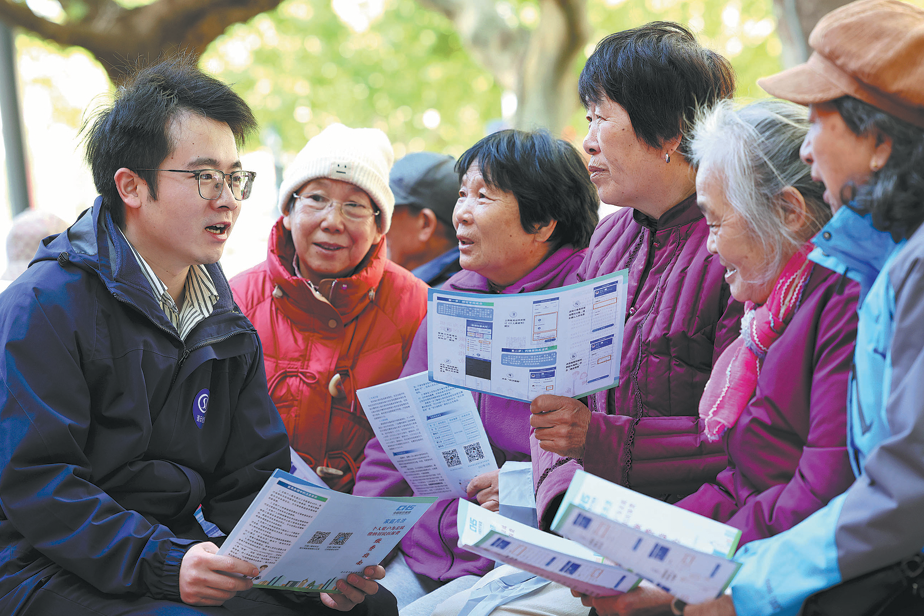California wines go west
By Lia Zhu | China Daily | Updated: 2018-03-23 04:35

US wine exports to China account for only 1.6 percent of Chinese wine consumption, but more wineries in California are looking to sell their products in a market that is forecast to reach $22 billion by 2020, reports Lia Zhu from San Francisco.
For six generations, Farrah Felten's family has been growing wine grapes in Lodi, California. And later this month her company will ship its first order to what she hopes eventually will be one of its biggest markets: China.
Felten's Klinker Brick Winery is nearing a contract with Chinese importers for 1,000 cases. What she called a "trial run" includes two zinfandels under the labels Old Ghost and Klinker Brick Old Vine.
"We are new to the Chinese market, so I'm just excited to see what will happen with our wines and how China will react to our brand," said Felten, vice-president of marketing and sales at Klinker Brick.
The contract is a result of the Shenzhen Wine Industry Association's efforts. Last year, the association made several trips to California's major wine producing regions — Napa and Sonoma counties, Livermore and Lodi. A liaison office was set up in San Ramon in December.
"We seek two types of wines — those of high quality but no brand awareness in China, and those with high production levels and reasonable price tags," said Chen Tie, secretary-general of the association that represents more than 300 importers.
The liaison office will be responsible for overseeing California wine exports to China and exchanges between California vintners and Chinese importers.
China is becoming the world's largest importer of wine. It imported 746 million liters of wine at a total value of $2.8 billion in 2017, an increase of 18 percent on 2016, according to winesinfo.com, citing Chinese customs figures.
"Chinese consumers, especially the young generation, are shifting from pursuing expensive vintage to boutique wine," said Chen. "They are developing a taste for American wines."
The association decided to test the market with zinfandel. This variety of black-skinned wine grapes, grown in more than 10 percent of California's vineyards, is relatively new to Chinese consumers.
"Old-vine zinfandel is our signature wine here in Lodi. It's an easy-drinking and crowd-pleasing variety," said Felten. "It's not as aggressive as cabernet. For cabernet, you have to have a palate to enjoy it."
What also may help zinfandel gain a foothold in the Chinese market is the concept of "century-old vine", said Tang Song, a Shenzhen-based wine expert, who is also a nationally certified top-level wine taster.
"In Chinese people's mind, older vines produce better- quality grapes," he said.
The association also will explore other varieties like cabernet sauvignon and pinot noir. It plans to import at least 300,000 cases of California wines every year within three years.
New World wine
"Who would have thought of that? Hotpot in Sichuan and spicy food in Hunan go very well with zinfandel," said Christopher Beros, Asia director with the California Wine Institute, an advocacy and research group. "Certain types of Chinese food pair extremely well with the characteristics of California wines."
California wines are particularly well-suited for the Chinese palate, because they tend to be a little fruitier than some of the highly tannic Old World wines, and that goes really well with full-flavor Chinese cuisine, said Beros.
Chinese alcohol traditions also favor New World wines, such as US wines, of which 90 percent are produced in California.
Unlike the Old World wines (the traditional wine-growing regions of Europe), the New World wines (those produced outside of the traditional areas) don't need decanting to help open up aromas and flavors.
"Chinese people prefer to drink wine in bottoms-up fashion and they often order wine for a large table," said Tang. "There's no time for decanting."
Alcohol content also draws Chinese consumers to US wines.
"US wines usually have higher alcohol content, and Chinese consumers believe that better -quality wines have higher alcohol content," said Tang.
And then there are labels and corks; they are as important as what's inside the bottle.
Chinese consumers prefer heavier bottles, corks instead of screw caps and labels decorated with California country-style images.
For instance, the image of the bell tower and expansive archway of Robert Mondavi Winery is instantly recognizable among Chinese wine lovers.
"Like Louis Vuitton, Coco Chanel and Gucci, they (Chinese consumers) want the brand names, they want the quality and they want the image. This is part of that," said Anton Pestun at Robert Mondavi Winery.
He pointed to a label bearing no pictures but only writings, saying, "Nobody likes it."
























